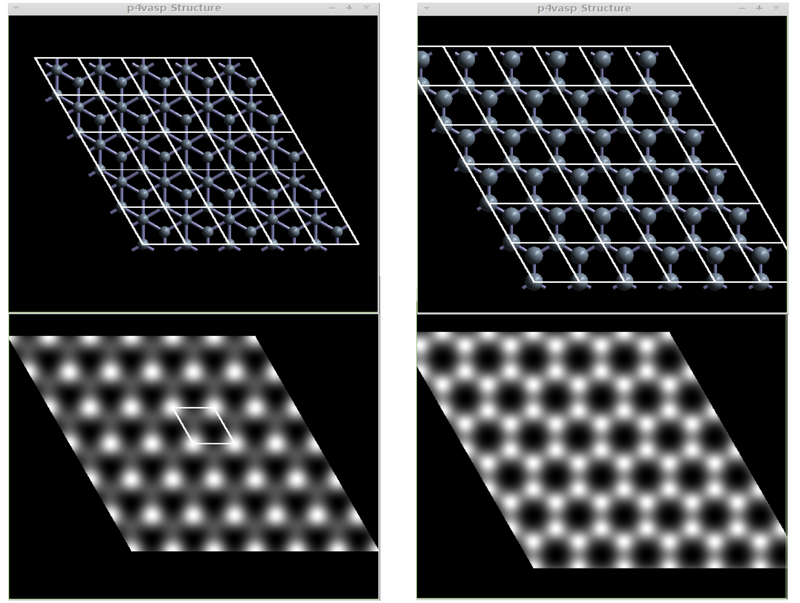STM of graphene: Difference between revisions
No edit summary |
|||
| Line 46: | Line 46: | ||
== Calculation == | == Calculation == | ||
*This example is carried out in complete analogy to . | *This example is carried out in complete analogy to {{TAG|STM of graphite}}. | ||
*The sample output for the graphite (left) and graphene (right) STM images should look like the following: | *The sample output for the graphite (left) and graphene (right) STM images should look like the following: | ||
Revision as of 10:58, 17 May 2017
Overview > Ni 100 surface relaxation > Ni 100 surface DOS > Ni 100 surface bandstructure > Ni 111 surface relaxation > CO on Ni 111 surface > Ni 111 surface high precision > partial DOS of CO on Ni 111 surface > vibrational frequencies of CO on Ni 111 surface > STM of graphite > STM of graphene > collective jumps of a Pt adatom on fcc-Pt (001): Nudged Elastic Band Calculation > List of tutorials
Task
Generation of an STM image of a graphene surface.
Input
POSCAR
C: Graphite Lattice 1.0 +2.4410462393 +0.0000000000 +0.0000000000 -1.2205231197 +2.1140080551 +0.0000000000 +0.0000000000 +0.0000000000 +10.0000000000 2 Cartesian +0.0000000000 +0.0000000000 +0.0000000000 +0.0000000000 +1.4093387034 +0.0000000000
INCAR
general: SYSTEM = Graphite surface slap ENMAX = 400 ISMEAR = 2 ; SIGMA = 0.2 ALGO= Fast
partial charge densities: LPARD = .TRUE. LSEPK = .FALSE. LSEPB = .FALSE. NBMOD = -3 EINT = -0.1 0.1
#DOS: #ISTART = 0 #ICHARG = 2 #LORBIT = 11
KPOINTS
K-Points 0 Monkhorst-Pack 9 9 1 0 0 0
Calculation
- This example is carried out in complete analogy to STM of graphite.
- The sample output for the graphite (left) and graphene (right) STM images should look like the following:
Download
To the list of examples or to the main page

